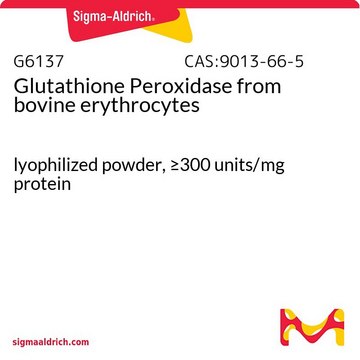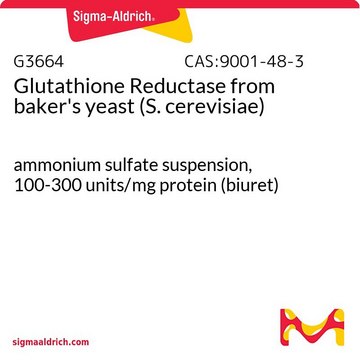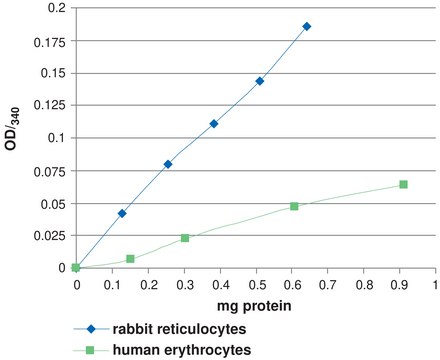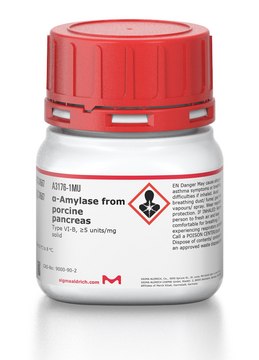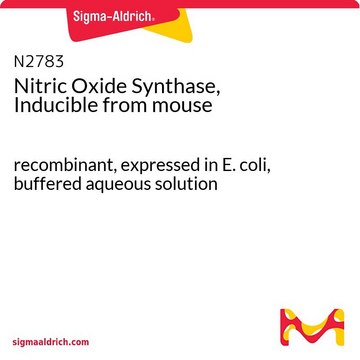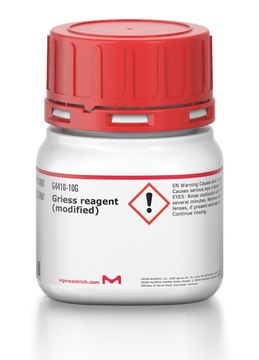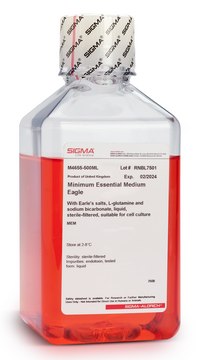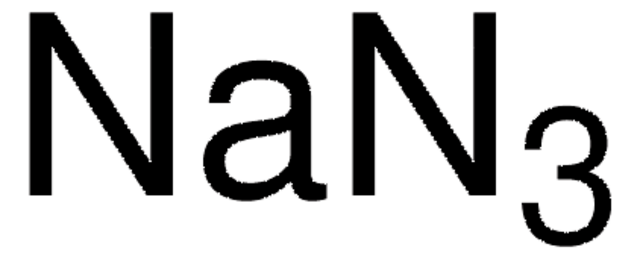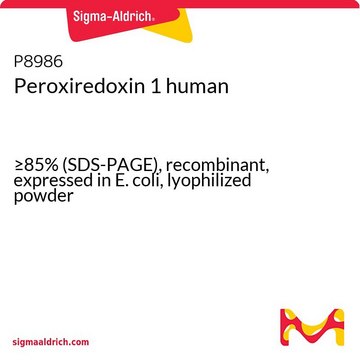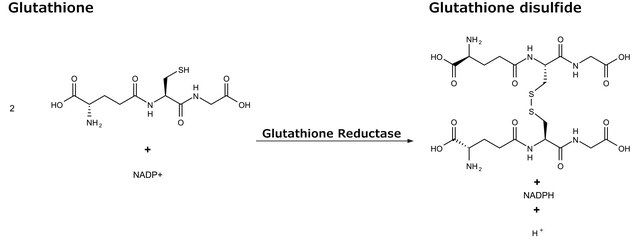G4013
Glutathione Peroxidase from human erythrocytes
lyophilized powder, ≥30 units/mg protein
Synonym(s):
GSH-Px, Glutathione:hydrogen-peroxide oxido-reductase
About This Item
Recommended Products
form
lyophilized powder
specific activity
≥30 units/mg protein
composition
Protein, 13-25% modified Warburg-Christian
UniProt accession no.
shipped in
dry ice
storage temp.
−20°C
Gene Information
human ... GPX1(2876)
General description
Application
Biochem/physiol Actions
Unit Definition
Physical form
Signal Word
Danger
Hazard Statements
Precautionary Statements
Hazard Classifications
Resp. Sens. 1
Storage Class Code
11 - Combustible Solids
WGK
WGK 3
Flash Point(F)
Not applicable
Flash Point(C)
Not applicable
Regulatory Information
Choose from one of the most recent versions:
Already Own This Product?
Find documentation for the products that you have recently purchased in the Document Library.
Which document(s) contains shelf-life or expiration date information for a given product?
If available for a given product, the recommended re-test date or the expiration date can be found on the Certificate of Analysis.
How do I get lot-specific information or a Certificate of Analysis?
The lot specific COA document can be found by entering the lot number above under the "Documents" section.
How do I find price and availability?
There are several ways to find pricing and availability for our products. Once you log onto our website, you will find the price and availability displayed on the product detail page. You can contact any of our Customer Sales and Service offices to receive a quote. USA customers: 1-800-325-3010 or view local office numbers.
What is the Department of Transportation shipping information for this product?
Transportation information can be found in Section 14 of the product's (M)SDS.To access the shipping information for this material, use the link on the product detail page for the product.
Do you have any solution stability information on glutathione peroxidase from erythrocytes?
The following information on the bovine source enzyme (equivalent to Product G6137) probably also applies to the human source enzyme (G4013). According to the literature, there is no appreciable loss after 3 months in the presence of 1 mM dithiothreitol (DTT) if solutions of the enzyme are frozen. There is a significant loss (15-22%) in 1 month when in the presence of 2 mM reduced glutathione (GSH), and if neither DTT nor GSH present, the loss is even greater (60-70% lost in 1 month frozen.1There are also stability concerns with the powdered form of Glutathione Peroxidase; the powder is shipped on dry ice and should be kept frozen. We have found that the powder should be stable at least a year if stored in the freezer below 0°C.In our experience, without DTT or mercaptoethanol present, a solution of Glutathione Peroxidase may lose much of its activity within a day, even on ice. Our general recommendation is to reconstitute in 10 mM sodium phosphate, pH 7.0 with at least 1 mM dithiothreitol. The solution should be divided into working aliquots and promptly frozen; it will be stable through one freeze-thaw cycle.1. Biochimica et Biophysica Acta, 358, 251-261 (1974).
My question is not addressed here, how can I contact Technical Service for assistance?
Ask a Scientist here.
Our team of scientists has experience in all areas of research including Life Science, Material Science, Chemical Synthesis, Chromatography, Analytical and many others.
Contact Technical Service